While food gardeners typically focus on annual vegetables such as lettuce, cucumbers, and tomatoes, most perennial vegetables provide a yearly crop of bulbs, flowerbeds, tubers, roots, fruits, stems, and leaves. Additionally, they’re easy to grow, improve soil, and they’re resistant to pests and diseases.
Perennial vegetables are the bedrock of permaculture gardening because they’re reliable. Common vegetables die quickly, whether after they’ve been picked or when it gets cold. The easier way to grow crops is to plant perennials; they’re less work, and you can harvest them for decades. If the idea of a low-maintenance harvest, delectable tubers, and leafy greens appeals to you, keep reading.
Why You Should Plant Perennial Vegetables
There are several benefits to growing perennial vegetables; these include the following:
- Low Maintenance: Perennial vegetables are low maintenance. During the spring months, there’s no sowing, pricking, or transplanting involved, and neither do they need as much feeding and watering.
- Resistant to Disease and Pests: Perennials are very robust and fight off disease and pests easier than annual vegetables.
- Save Money: You won’t need to spend money on seeds to plant more vegetables; since they’re lower maintenance, they don’t need as much food, and since you don’t need to spend time sowing and prepping the ground, you can focus on other vegetables which will increase your profit margins if you plan on selling them.
How to Take Care of Perennial Vegetables
You’ll need to do some research before deciding what perennials to grow because, as with all vegetables, they grow in different conditions. Some prefer a woodland or a shaded site, while others grow best under direct sunlight. Therefore, grow the vegetables that will thrive best in your garden zone and landscape. To get started, extra soil preparation is required because these plants stay in the same spot for decades. To improve the soil, add amendments such as organic fertilizer, aged manure, and compost, including weed removal. Water your plants a lot in the first year to help them become properly established. During the years that follow, use compost to top dress around the plants, and once a year, use a granular organic fertilizer.
Perennial Vegetables to Plant
There are so many perennial vegetables to plant that it’s impossible to mention them all, but here are some of the most popular: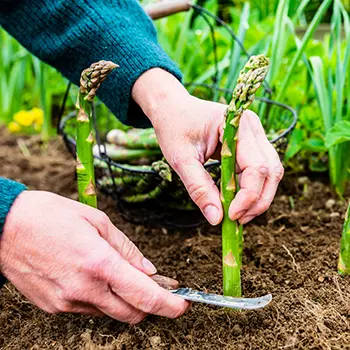
Asparagus (Zones 3-8): Asparagus is delicious, but if you don’t have excess space in your garden, don’t plant them. They grow wide and tall, and once they’re in the ground, they’re not going anywhere. You can grow them from seed, but the ideal method is to plant bare-root crowns straight into the soil. Unfortunately, this well-loved vegetable takes two to three years before they’re ready to harvest. The good news is that if you’ve got the patience to wait that long, they’ll produce luscious spears for almost two decades.
Good King Henry (Zones 4-8): This stout plant provides gardeners with a dual harvest. In early spring, you can expect pencil-thin shoots. Once cut, you can prepare them like asparagus, and next comes to the greens. The leaves are similar to spinach; you can cook them by steaming or boiling them.
Related: Plant This Vegetable Once and Harvest it For 30+ Years
Rhubarb (Zones 2-9): Most gardeners would agree that rhubarb is the easiest plant to grow. It thrives in the sun, partial sun, or shade and can grow in a range of soils. It’s so robust that rabbits and deer avoid it, and it’s extremely resistant to diseases and pests. Rhubarb prefers rich soil, so top-dress with a few inches of compost every spring. 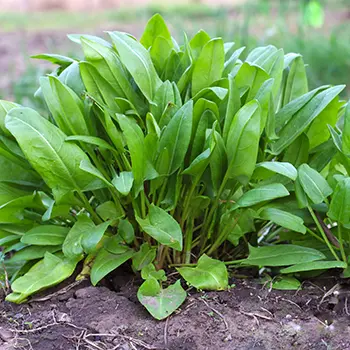
Sorrel (Zones 4-9): Start growing your sorrel seeds inside on a sunny window sill or under a grow light. The plant grows best in full to partial shade. It’s important to mention that sorrel takes up a lot of space when allowed to seed, so to control the spread, give the flowers a trim during the fading stage.
Tree Kale (Zones 6-9): This plant has several names, including perennial kale, walking stick kale, and tree collards. If you’re looking for a reliable crop of tasty green-purple leaves for sauteing, salads, pesto, and many other dishes, tree kale is the perfect plant. Plant it in a garden bed under full sun with a few inches of aged manure or compost for best results. Instead of planting seeds, plant-rooted cuttings are purchased from an online nursery or a garden center. The kale tree can grow between four to six feet wide and six to eight feet tall.
Related: 10 Vegetables That Are Too Easy To Grow Inside
American Groundnut (Zones 3-7): There are plenty of edible parts to the American groundnut, including the starchy tubers, the young shoots, and the beans. This spirited plant flourishes in moist soil and is typically grown next to streams and rivers. Every year, you can expect the American groundnut plant to grow between eight to ten feet.
Egyptian Walking Onion (Zones 3-10): This rare perennial vegetable reproduces fast and quickly makes its way around the garden. But they’re easy to control; you simply pull the ones that start taking over space for other plants and eat them. You can prepare fresh green shoots like scallions. They come forth in early spring. In summer, the bulbs arrive, and as the season continues, the bulb’s crown grows heavier and pulls the plant to the ground. A new plant develops when the small bulbs root.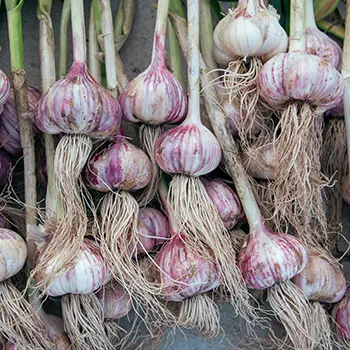
Garlic (Zones 3-5): Gardeners prefer to plant garlic during the fall months, but you can multiply them by leaving them in the soil for a few seasons. You won’t get entire heads; instead, they grow as equally nutritious scraps. Garlic scraps taste great in dishes such as salads, soups, and mashed potatoes.
The Disadvantages of Growing Perennial Vegetables
The main challenge in growing perennials is they take a long time to harvest. There’s typically a two- to three-year wait, but it’s worth it in the end because you’ll have access to unlimited crops for decades. Additionally, if you’re growing them in the United Kingdom, you’ll need to ensure they’re grown in the right place because transplanting can ruin them. This applies even more so to rhubarb.
Final Thought
If you’re a first-time vegetable gardener, the thought of waiting two-plus years for harvesting doesn’t sound very appealing. However, the advantages outweigh the disadvantages. You’ll have an extended harvest season, they help nurture the soil, and you’ll save time and money. If you were stuck on the fence about whether to plant perennials, hopefully, the information in this article will change your mind.
You may also like:
DIY Corner Vegetable Storage Bin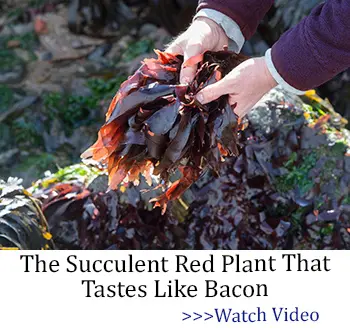
If You See This Plant in Your Backyard, Burn It Immediately! (Video)

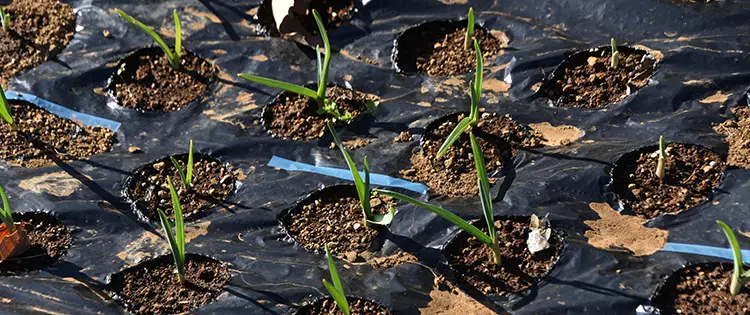

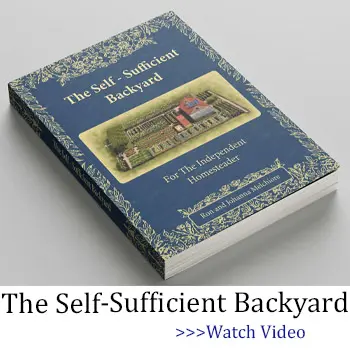
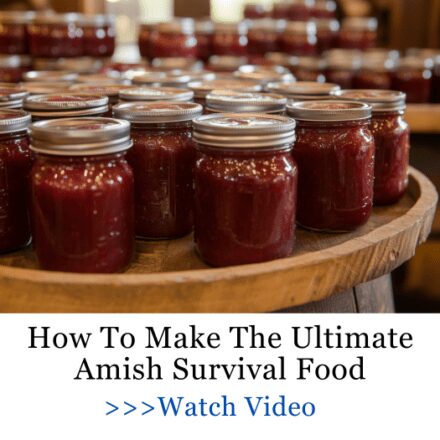

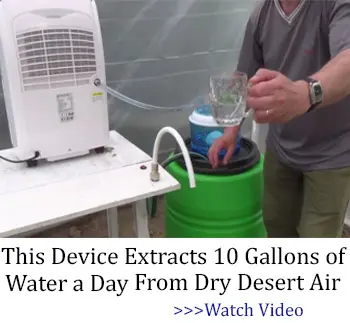
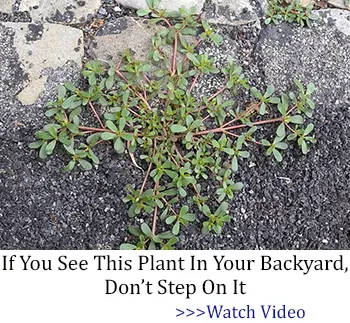


In the UK Taunton Dean Kale (it sounds a bit like your ‘tree kale’ is a winner. It is a tasty green perennial kale grown from cuttings. It spreads rather but doesn’t need much attention and can be harvested during the ‘hungry gap’ Caterpillars find it a bit tough and it isn’t much bothered by them. It’s excvellent in bubble and squeak and stir fries.
What is bubble and squeak? Stir fries ee know but bubble and squeak????
Basically potato pancakes, but potatos loaded with leftover vegetables, maybe bacon or ham.
By garlic scraps, do you nean garlic SCAPES?
Lol I figured.
What about artichokes?
Never received
Hi,
Thank you for your message.
You will receive an email from support@selfsufficientprojects.com regarding your request.
Let us know if you need further assistance.